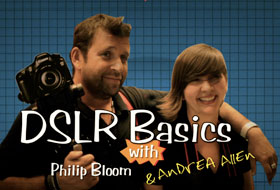Vimeo Video School
Learn how to make better videos through lessons, tutorials, and sage advice from us, your friendly personal creativity consultants.
Recent Lessons
Hey Vimeo!
This week's Video School Challenge is fun for the whole family — especially the little ones, as we're putting the kids in the director's seat! Your challenge is simple: Help a kid make a video.
Just as a child's imagination is boundless, the possibilites here are endless! You could shoot a script written by a child, animate a drawing by a toddler, or help a little one make a documentary about something she's interested in. There are no rules, except that a kid (or a group of kids) must be the driving creative force behind the project.
So how about some examples to get the creative juices flowing like Capri Sun after a soccer game?
First, watch how Bianca Giaever collaborated with a six year old to make this beautifully surreal piece:
- Category:
- Do It Yourself
- Difficulty:
- beginner
We all love our home TVs, but whether they're LCD or Plasma screens, some people believe that the absolute best way to enjoy films and movies at home is to use a projector. Theatres and Cinemas around the world use huge film and digital projectors, so why not have one at home? Today we're explaining two types of at-home front projector technologies and how they work.

Image courtesy of Shutterstock.
Similar to the traditional flat-screen TV game, the home projector game consists of two types of technologies: LCD and DLP. Short for Liquid-Crystal Display, LCD projectors are a cousin of their Television brethren. DLP, short for Digital Light Projection, is a brand of projector technology that uses a Digital Micromirror Device (DMD).
A DMD is actually about the size of a microchip, and consists of thousands of tiny computer-controlled mirrors. Each tiny mirror on the chip represents one pixel on screen. Like all things digital, these mirrors can be turned on and off by adjusting the angle of the mirror on the chip towards the projector lens, or away from it.
The other major part of a DLP projector is the Color Filter, or Color Wheel. This fast spinning wheel has translucent red, green, and blue sections, that together with the DMD forms a moving image. From the light source, light travels through a "condensing lens" to focus it as it travels through the color wheel, back out through a "shaping lens", which then focuses it on the DMD. The DMD then reflects the image out the projector lens and onto your silver screen.

DLP diagram by Cameron Christopher
- Category:
- Gear
- Difficulty:
- beginner
Do you want to help your community? Are you just dying to use your brain and visual storytelling talents and your resources and your big awesome heart to make a difference somehow? Good! I've got just the thing to help. This video, brought to you by our friends What Took You So Long? highlights some of the keys tips for creating short films to promote your non-profit organization or project.
The video gives an intuitive set of helpful tips and insider tricks for making a successful video to promote your cause. The tips are broken into three effective categories, as follows:
Continue reading…I'm not sure where you happen to be, but it's very cold where we are. On days when I'd rather not venture outside, I get a hankering to do some baking. This weekend, we're challenging you to show us how handy you are with a camera and a cookbook! Check out our lesson on shooting a Recipe video for more detailed instructions and oodles of tips!
For a great example, check out this video from tiger in a jar.
- Category:
- Shooting
- Difficulty:
- beginner
More Lessons You Might Like
+ See all lessonsWhere to begin
-
New to Video School?
You should definitely read the FAQ. -
New to Making Videos?
Learn the basics in Video 101. -
Not sure where to start?
Check out our Featured Lessons or browse the categories below.
Browse by Category
Submit Your Tutorial
Most of the video tutorials in our Video School lessons come from Vimeo members. If you have a tutorial you'd like to share, please submit it here.










